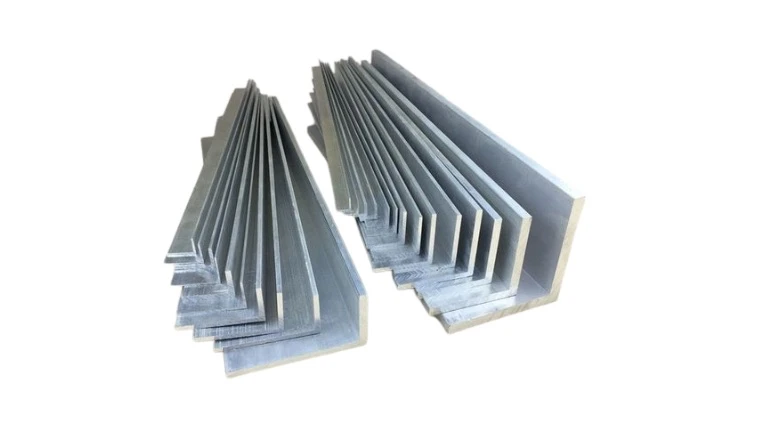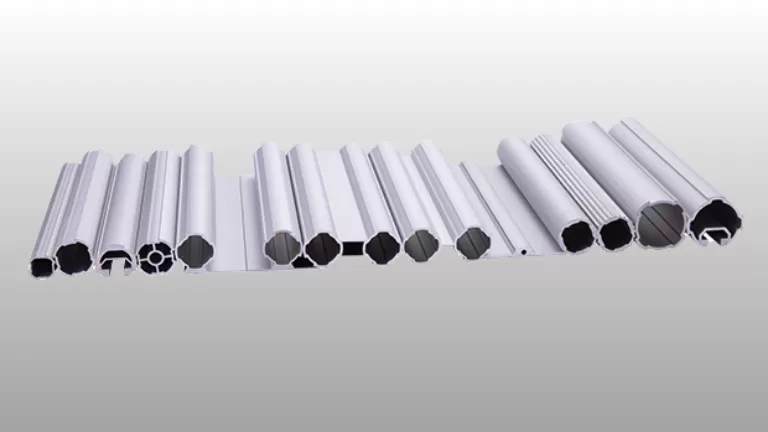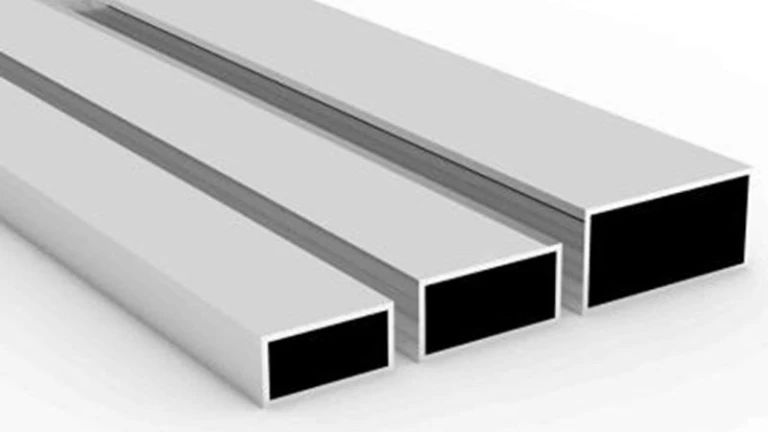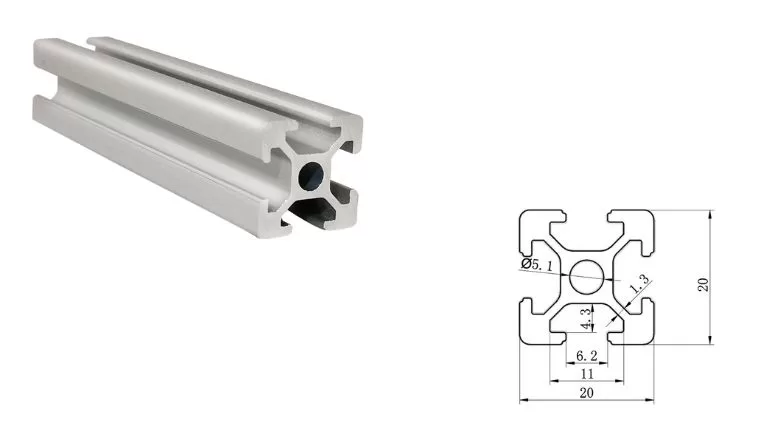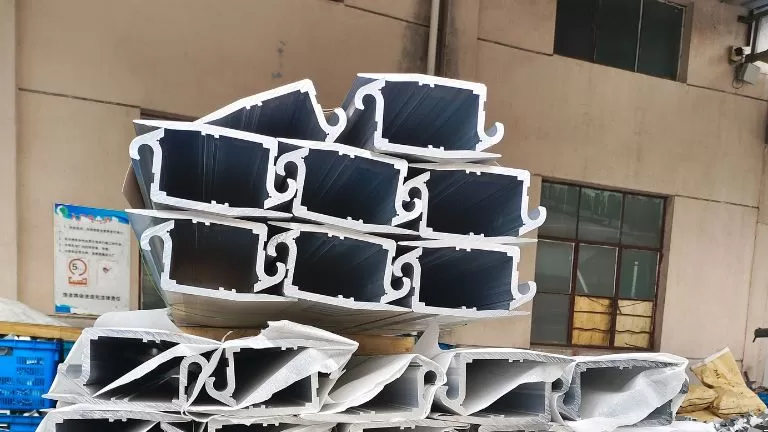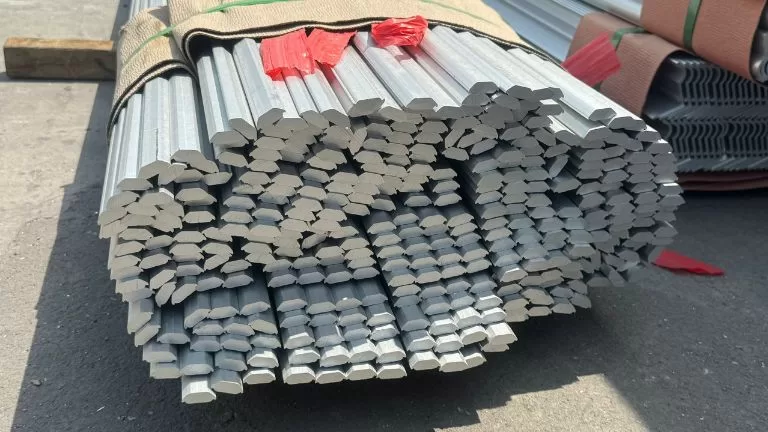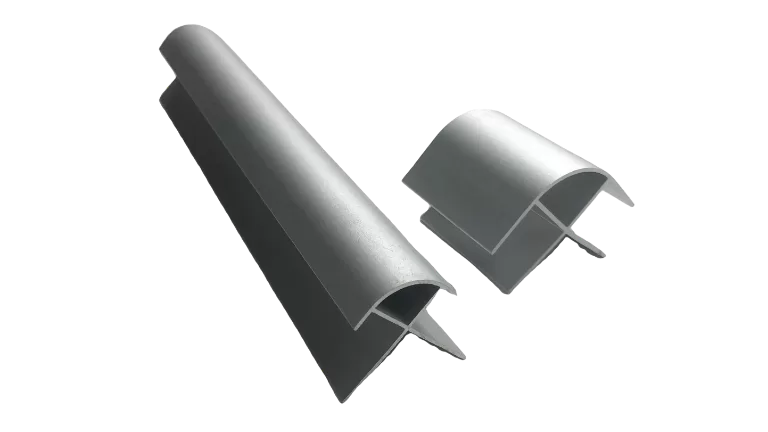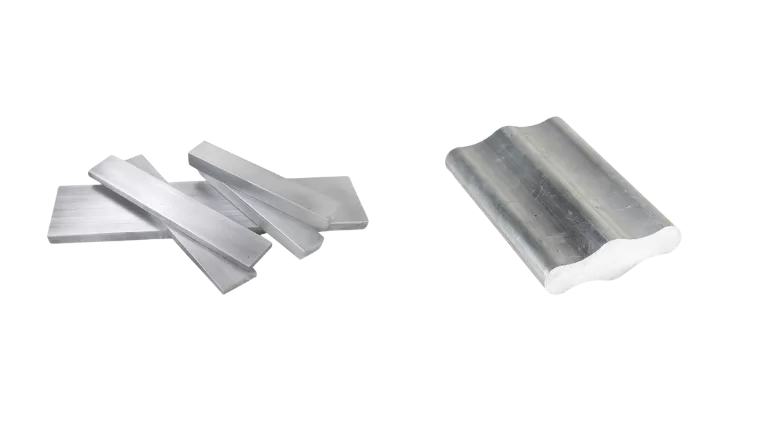Custom Aluminum Cable Deck Railing Section
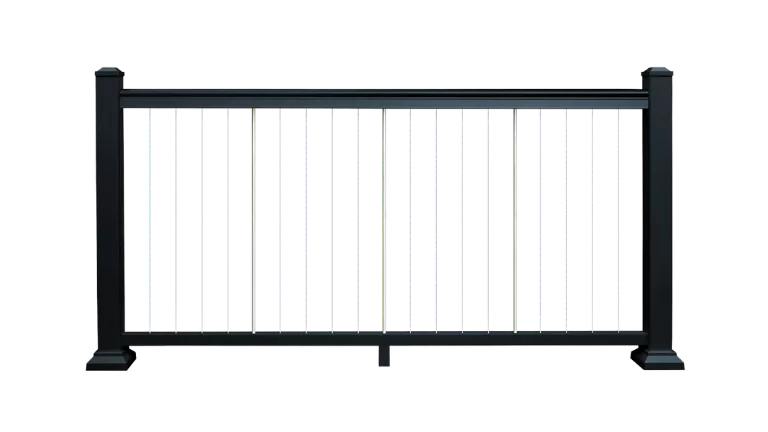
Aluminum cable deck railing is a modern safety system designed for decks, balconies, and outdoor spaces. It combines corrosion-resistant aluminum posts with sturdy stainless steel cables, providing a strong yet visually open barrier that enhances both safety and aesthetics.
Thanks to precise aluminum extrusion manufacturing, these railing systems feature clean lines and a minimalist look—ideal for modern architectural projects. Their durable materials and low maintenance make aluminum cable deck railings a smart, long-lasting choice for property owners.

Horizontal Cable Deck Railing

Vertical Cable Deck Railing

Custom-Fabricated Systems
Custom Services for Cable Deck Railing
As a leading manufacturer of aluminum cable deck railing systems in China, we are dedicated to delivering top-quality railing solutions for a variety of applications. Our expertise begins with customized design and engineering, allowing us to create railing systems tailored to the unique architectural demands of each project. From precision fabrication and cable assembly to sophisticated surface treatments and final installation support, our comprehensive production process ensures that every railing system not only meets strict quality standards but also aligns perfectly with our clients’ functional and aesthetic requirements.
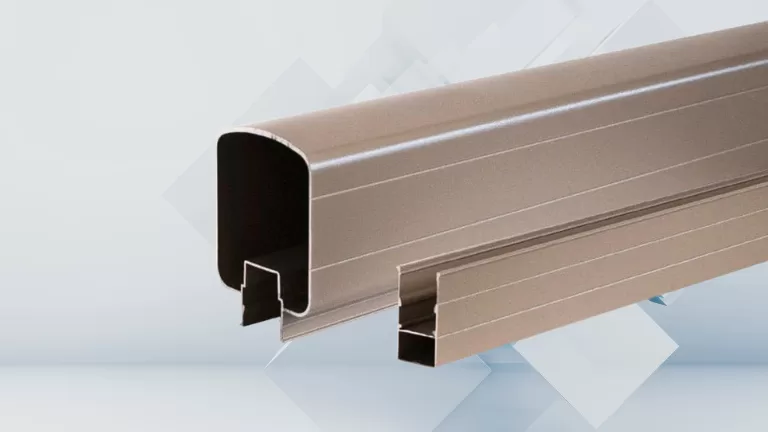 design and fabricate railing system molds in-house, ensuring precision and efficiency for every aluminum cable deck railing project. Our skilled team collaborates closely with clients to develop custom tooling based on their designs or specifications, optimizing both functionality and appearance. The mold development process typically takes around 7 days. After completion, we provide sample railing components for client review and approval before proceeding to mass production.
design and fabricate railing system molds in-house, ensuring precision and efficiency for every aluminum cable deck railing project. Our skilled team collaborates closely with clients to develop custom tooling based on their designs or specifications, optimizing both functionality and appearance. The mold development process typically takes around 7 days. After completion, we provide sample railing components for client review and approval before proceeding to mass production. For superior durability and visual appeal, we offer various surface treatment solutions. These include anodizing for added corrosion resistance, powder coating for vibrant finishes, fluorocarbon coating for enhanced weather resistance, and wood grain transfer technology for elegant, natural-looking designs. These treatments are customizable to fit specific aesthetic and functional needs, ensuring that profiles not only perform well but also look exceptional.
For superior durability and visual appeal, we offer various surface treatment solutions. These include anodizing for added corrosion resistance, powder coating for vibrant finishes, fluorocarbon coating for enhanced weather resistance, and wood grain transfer technology for elegant, natural-looking designs. These treatments are customizable to fit specific aesthetic and functional needs, ensuring that profiles not only perform well but also look exceptional. To deliver comprehensive aluminum cable deck railing solutions, we offer a full suite of processing services, including CNC machining, cutting, drilling, threading, punching, welding, and assembly. These fabrication capabilities enable us to provide railing systems precisely manufactured and assembled to your specifications, ensuring flexibility, quality, and convenience for every project. With our extensive expertise, we can accommodate a wide range of design and installation requirements to meet diverse client needs.
To deliver comprehensive aluminum cable deck railing solutions, we offer a full suite of processing services, including CNC machining, cutting, drilling, threading, punching, welding, and assembly. These fabrication capabilities enable us to provide railing systems precisely manufactured and assembled to your specifications, ensuring flexibility, quality, and convenience for every project. With our extensive expertise, we can accommodate a wide range of design and installation requirements to meet diverse client needs.Features of Aluminum Cable Deck Railing
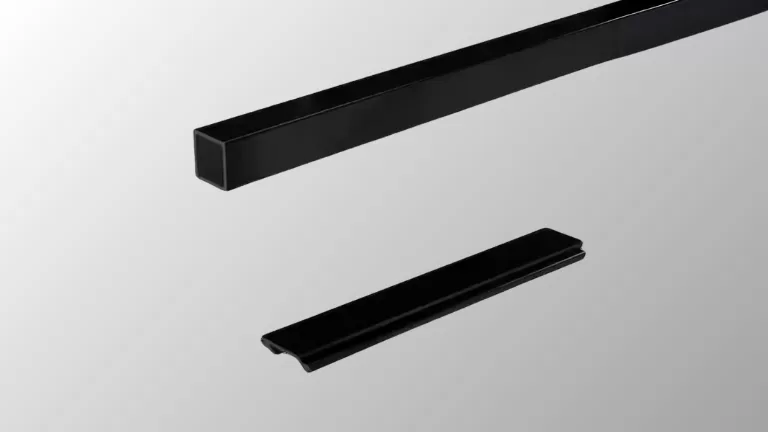
Excellent corrosion resistance
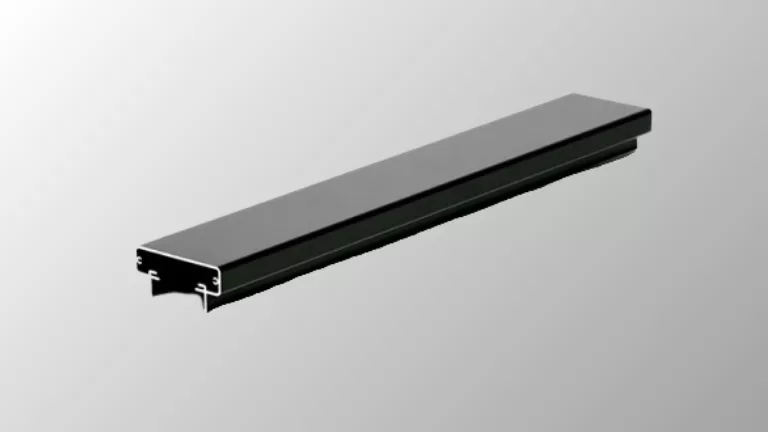
Modern, sleek appearance
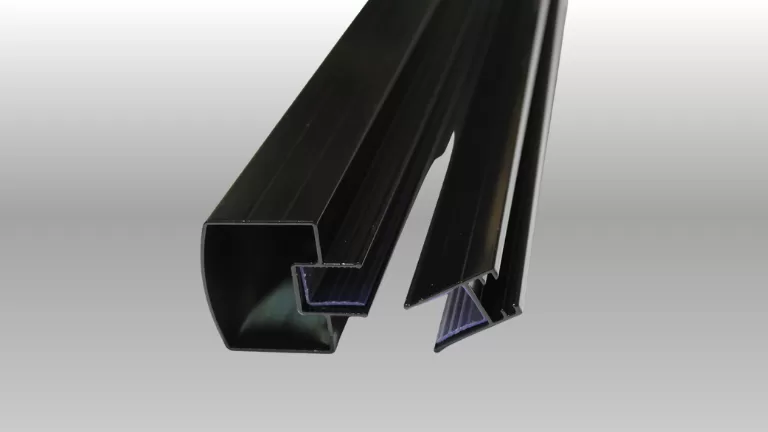
Unobstructed views

Strong and durable structure
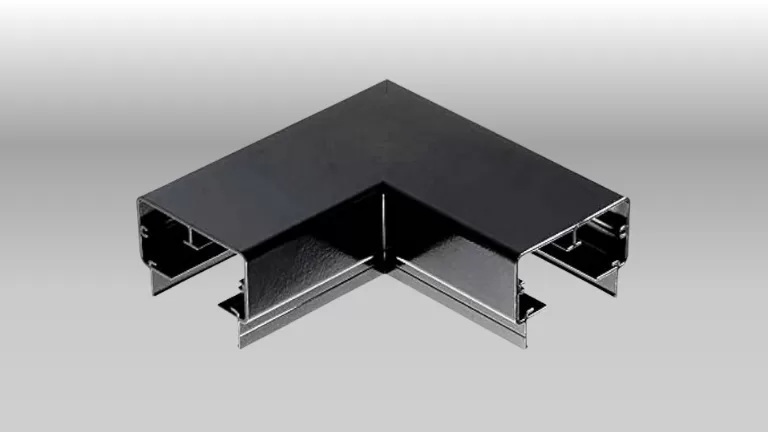
Low maintenance
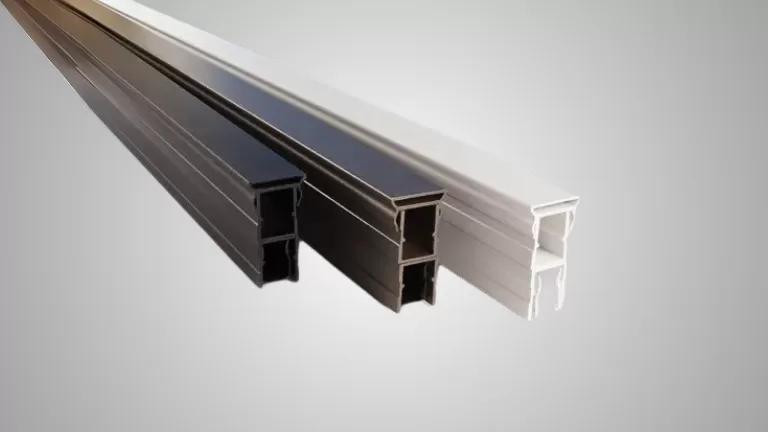
Flexible customization
Common Materials for Cable Deck Railing
Aluminum Cable Deck Railing mainly uses 6061-T6 for high-strength load-bearing parts and 6063-T5/T6 for smooth, easily processed decorative parts. Both have a density of 2.7g/cm³ and support anodizing or coating for diverse designs. We also offer 6005 and 6082 alloys for more options.
- Density: 2.7 g/cm³, lightweight for easy transport and installation
- Strength: Tensile strength ≥290 MPa, yield strength ≥240 MPa, suitable for high-load applications
- Corrosion resistance: Excellent, further enhanced by anodizing, ideal for long-term outdoor use
- Workability: Good weldability, machinability, and suitable for complex structures
- Applications: Used for railing posts, connectors, and other load-bearing parts, especially where high strength and durability are required
- Density: 2.7 g/cm³, same as 6061, but with greater focus on appearance and decoration
- Strength: Tensile strength ≥205 MPa (T6), yield strength ≥170 MPa, ideal for moderate-load requirements
- Corrosion resistance: Good, greatly improved after anodizing, with a smooth and attractive finish
- Workability: Excellent for extrusion, suitable for complex profiles
- Applications: Used for crossbars, handrails, and decorative profiles, especially where a smooth and attractive surface is desired
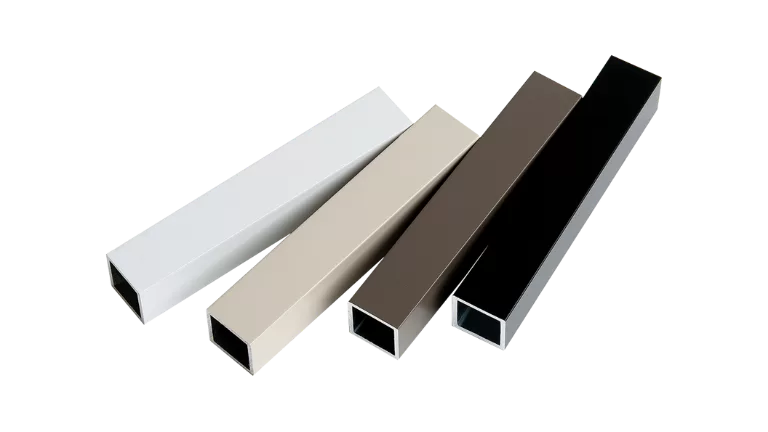
Typical Uses
1. Residential decks, balconies, porches, rooftop terraces:
Provides safety while preserving open views, making outdoor spaces feel larger. Durable and easy to maintain, suitable for various home styles.
2. Commercial properties: restaurants, hotels, resorts, public viewing decks:
Creates a stylish, modern look that attracts guests. Meets safety codes while enhancing openness and visibility for commercial spaces.
3. Waterfront homes and marinas:
Resistant to corrosion, perfect for humid or salty environments. Maintains scenic views without sacrificing safety.
4. Apartment complexes, condos, and modern office buildings:
Complements contemporary architecture and increases property appeal. Low maintenance and long-lasting for shared or public areas.
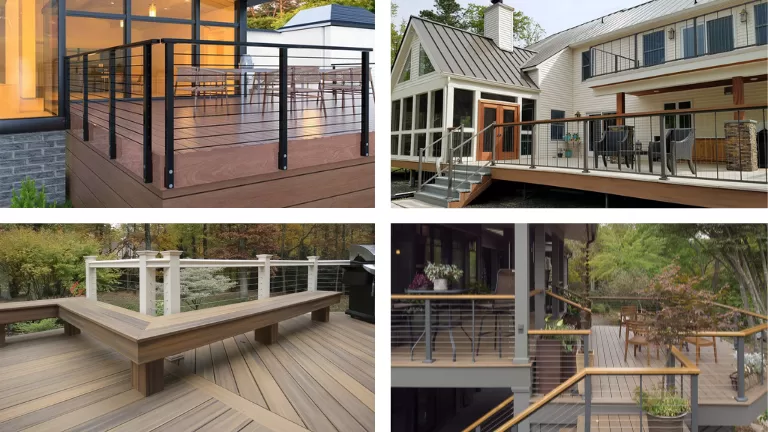
Aluminum Cable Deck Railing Structure
Aluminum cable deck railing uses strong aluminum posts paired with stainless steel cables to create a modern and safe barrier. It offers excellent corrosion resistance, a sleek appearance, and unobstructed views, making it ideal for decks, balconies, and stairs.
Main Accessories:
1. Posts: These vertical supports are typically made of powder-coated or anodized aluminum. They provide the framework and stability for the entire railing system.
2. Cable infill: Stainless steel cables are threaded horizontally between posts, forming the main barrier. They ensure both safety and visibility.
3. End fittings/terminal fittings: Fittings at the end of each cable allow for professional tensioning and secure attachment. They play a critical role in cable stability and adjusting tightness.
4. Intermediate posts or cable spacers: These components support the cables between main posts and prevent sagging. They help maintain the railing’s strength and structure over wide spans.
5. Handrails: Aluminum handrails are mounted on top for added safety and comfort. They also contribute to the finished look of the railing.
6. Mounting brackets and screws: Specialized brackets and fasteners securely attach posts and handrails to decks or walls. They are made from rust-resistant materials to ensure a long lifespan.
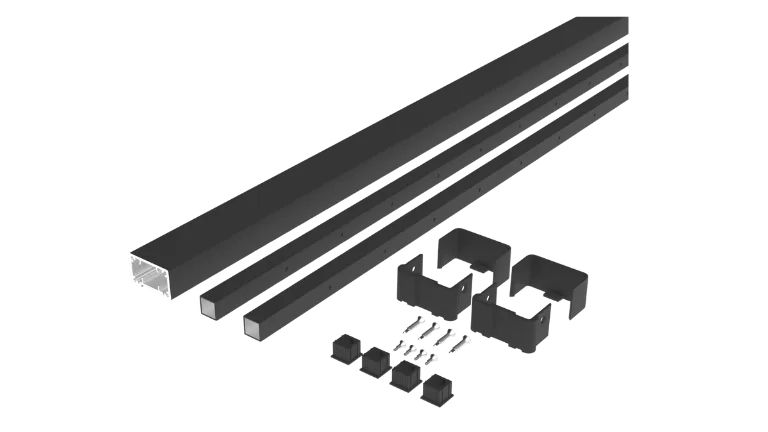
RFQ of Aluminum Cable Deck Railing
HTS New Materials, based in Jiangxi Province, China, is a leading aluminum extrusion manufacturer with over 40 advanced production lines and powerful equipment, including a 6000-ton extrusion press. We produce a wide range of aluminum profiles for industries such as construction, industrial applications, and high-end doors and windows, including thermal break profiles. Our services extend to comprehensive surface treatments like anodizing, powder coating, fluorocarbon coating, and wood grain transfer, as well as advanced machining and fabrication capabilities such as CNC machining, drilling, and welding. Committed to quality and innovation, we deliver tailored aluminum solutions to meet the diverse needs of clients globally.

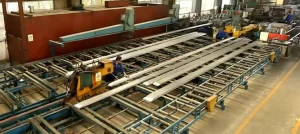

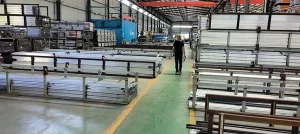

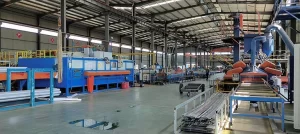


- Measuring and Marking:
Determine the positions of the posts, ensuring that both horizontal and vertical deviations are within 3mm for accuracy. - Securing the Posts:
Depending on the deck material, either embed the posts or fasten them with screws, making sure each post is perfectly vertical. - Threading the Cables:
Insert the cable through the cable holes in one end post, then pass it through all intermediate posts. Use a tensioner (such as a turnbuckle) at the opposite end to tighten the cable until it is taut and does not wobble. - End Fixing:
Secure both ends of the cable using dedicated clamps or crimping tools, ensuring the connections are firm and safe. - Finishing Touches:
Install post caps and cover screw holes to enhance the overall appearance of the railing system.
- Regularly check the cable tension to ensure the system remains secure.
- It is recommended to wipe the cables and posts with a neutral cleaner annually to remove dust and stains.
- After extreme weather events, such as strong winds or heavy rain, inspect all post fasteners for any loosening to maintain overall safety.
. Anodizing (Oxidation)
- Common Colors:
Natural silver
Black
Champagne
Light bronze
Dark bronze
Gold
2. Electrophoresis Coating (E-Coating)
- Common Colors:
Black
Champagne
Light bronze
Dark bronze
Custom metallic colors
3. Powder Coating
- Colors:
Can match any color based on the RAL color chart.
Offers textures like matte, gloss, satin, and custom finishes.
4. PVDF Coating (Polyvinylidene Fluoride)
- Colors:
Also customizable using the RAL color chart.
High-end finishes with matte or glossy effects.
5. Wood Grain Transfer Printing
- Colors and Patterns:
Mimics various wood types (e.g., oak, walnut, teak, mahogany).
Custom patterns available based on provided samples.
6. Film Lamination
- Colors and Patterns:
Includes textures like marble, leather, and solid colors.
Custom finishes and patterns based on provided samples.
Pre-Treatment Options (Impact on Final Color)
- Brushing/Polishing: Produces smooth or reflective metallic surfaces.
- Sandblasting: Adds a rough, matte texture before the final surface treatment.
We provide a wide range of machining services for aluminum extrusions to meet specific requirements. These include cutting off/section removal, slotting, drilling holes, tapping threads, bending, and localized stamping to create deformations. For example, we can trim extruded profiles to custom lengths, mill precise grooves, create threaded holes for fasteners, bend profiles into specific shapes, or apply localized stamping to achieve custom forms or deformation.
In addition to these processes, we also offer TIG/MIG welding to join aluminum components for a solid structure. Furthermore, our services include assembly of common accessories, such as brackets, corner connectors, screws, hinges, end caps, and rubber seals, providing complete and ready-to-install profile solutions tailored to your project needs. This ensures that we can handle everything from simple cuts to highly customized fabrication and assembly, all with precision and efficiency.
For custom aluminum extrusion projects, we accept a variety of drawing formats, including CAD files, STEP files, and PDF files. However, for extrusions that require additional machining processes, it’s recommended to provide STEP files, as they ensure precise 3D modeling for machining accuracy.
While PDF files are acceptable, converting them into CAD drawings may result in the loss of certain details, requiring us to manually redraw the design, which could increase lead time. For the fastest and most accurate quotation, we recommend providing CAD files (e.g., DWG/DXF) and STEP files to ensure efficient design evaluation and pricing.
Mold fees are an essential part of the custom aluminum extrusion process. Since every order requires a uniquely designed mold tailored to specific requirements, these molds cannot be used for other products. Therefore, the mold fee is necessary and non-negotiable.
We require 100% upfront payment of the mold fee before mold development begins to ensure timely production. However, as a token of appreciation for your support, we offer a refund of the mold fee or equivalent discounts once the order reaches a certain production volume. Specific policies can be discussed based on your order volume and collaboration details.
Our minimum order quantity (MOQ) varies depending on the size of the product. For smaller-sized products, the MOQ is typically 500kg, while for larger-sized products, it is 2 tons.
We will specify the exact MOQ requirements during the quotation process. If your order quantity does not meet the MOQ, we can still arrange production, but an additional fee will be applied to cover mold preheating and production setup time. Rest assured, this extra fee will be reasonable, and we aim to keep it as minimal as possible to ensure smooth cooperation.
Packaging can be customized according to your needs. Options include using protective film or paper to separate and protect the surface, or foam film for additional surface protection. Products can be palletized or packed into cartons, and the quantity per pallet or carton can be specified by the customer.
The standard packaging involves bundling several pieces together with plastic wrap and then securing them onto pallets. Any packaging requirements beyond the standard will be accommodated, and the associated costs will be clearly provided to the customer.
Mold production typically takes 7 days. After the sample is confirmed, producing a full container load of 26 tons generally requires 14 days for extrusion alone. If surface treatment is required, an additional 3 days will be needed. For machining, extra time will be required depending on the complexity and volume of the machining work. The exact additional time for machining will be determined based on the specific processing requirements.
Aluminum profiles are naturally corrosion-resistant due to the formation of a thin, protective oxide layer when exposed to air or water. This oxide layer is stable and self-repairing, meaning that even if the surface is scratched or cut (such as at exposed ends or during processing), the aluminum will not rust or corrode like iron or steel. Instead, the exposed areas will quickly form a new oxide layer, providing continuous protection against further oxidation.
With proper design, installation, and maintenance, aluminum profiles can last for decades, even in challenging environments. For example, untreated aluminum can easily withstand 20-30 years in outdoor applications, while profiles with surface treatments like anodizing or powder coating can last even longer, often exceeding 50 years. This makes aluminum an excellent choice for applications where durability and long-term performance are essential.
The price of aluminum profiles consists of several components: raw material costs, extrusion processing fees, surface treatment fees, machining costs, and additional packaging fees. Among these, the cost of aluminum as a raw material tends to fluctuate frequently, while other fees remain relatively stable. Due to these fluctuations, our quotations are typically valid for 7 days.
Pricing can be structured in different ways depending on the product and requirements. It can be calculated by weight (e.g., cost per ton), by length (e.g., cost per meter), or by piece (e.g., cost per unit). For products involving extensive machining, such as heat sinks, pricing is generally calculated on a per-piece basis to accurately reflect the additional processing costs. This flexible pricing approach ensures the quote is tailored to the specific needs of the customer.
We can manufacture aluminum profiles in compliance with technical requirements that meet European standards (EN), American standards (ASTM/AA), or other standards as specified by the customer. Custom production is tailored to ensure that the profiles meet the specific standard requirements requested.
Our production equipment is designed for the metric system. If the drawings provided are in the imperial system, we will convert them into metric units for production to ensure accuracy.
It is important to note that while we can machine imperial-threaded holes for fasteners, if you require us to supply matching imperial fasteners, they may not always be available in stock. Custom orders for imperial fasteners typically require a large volume for production. Please consider this when planning your project.

